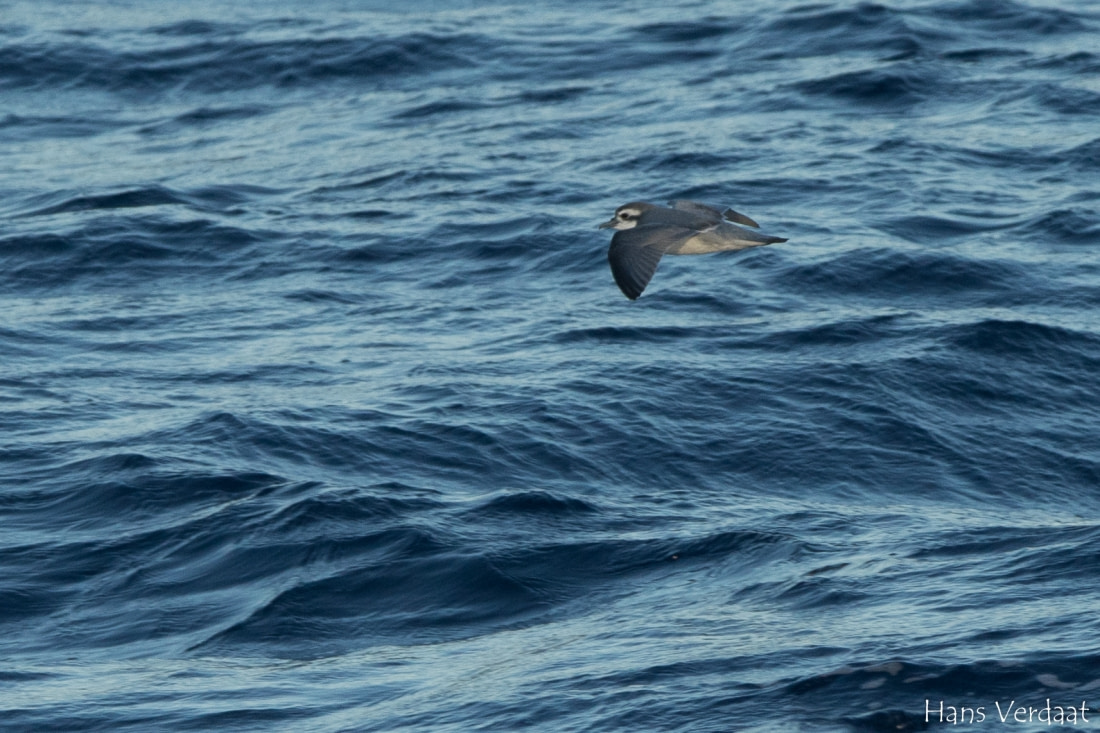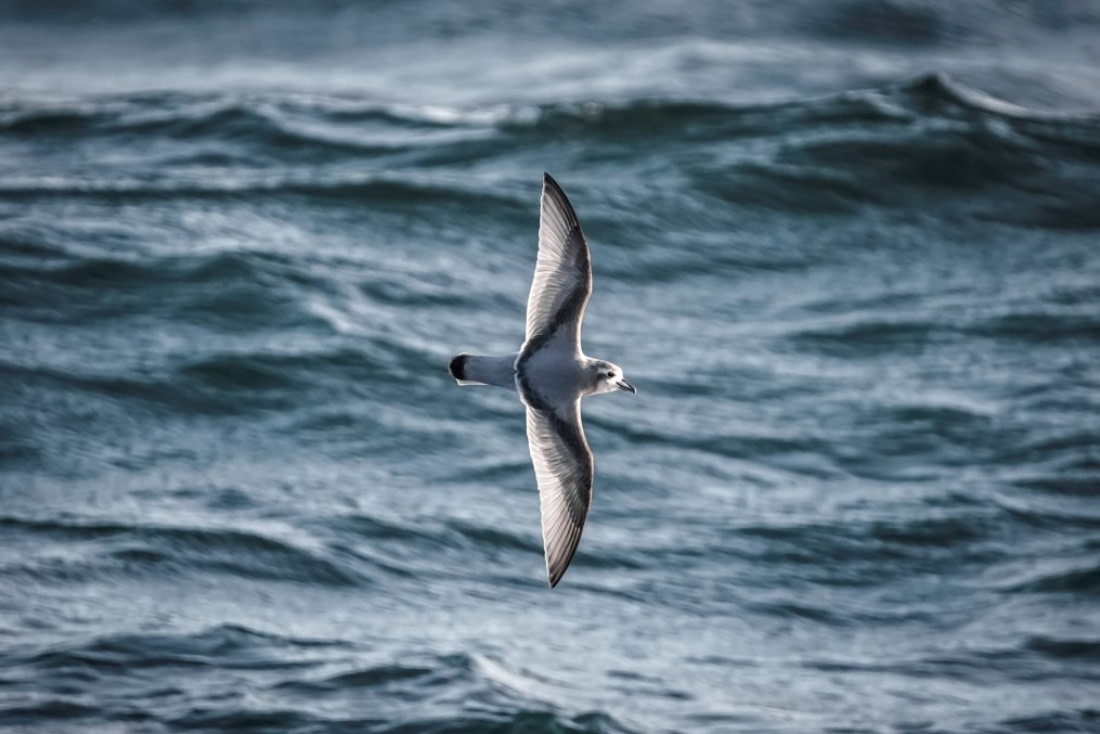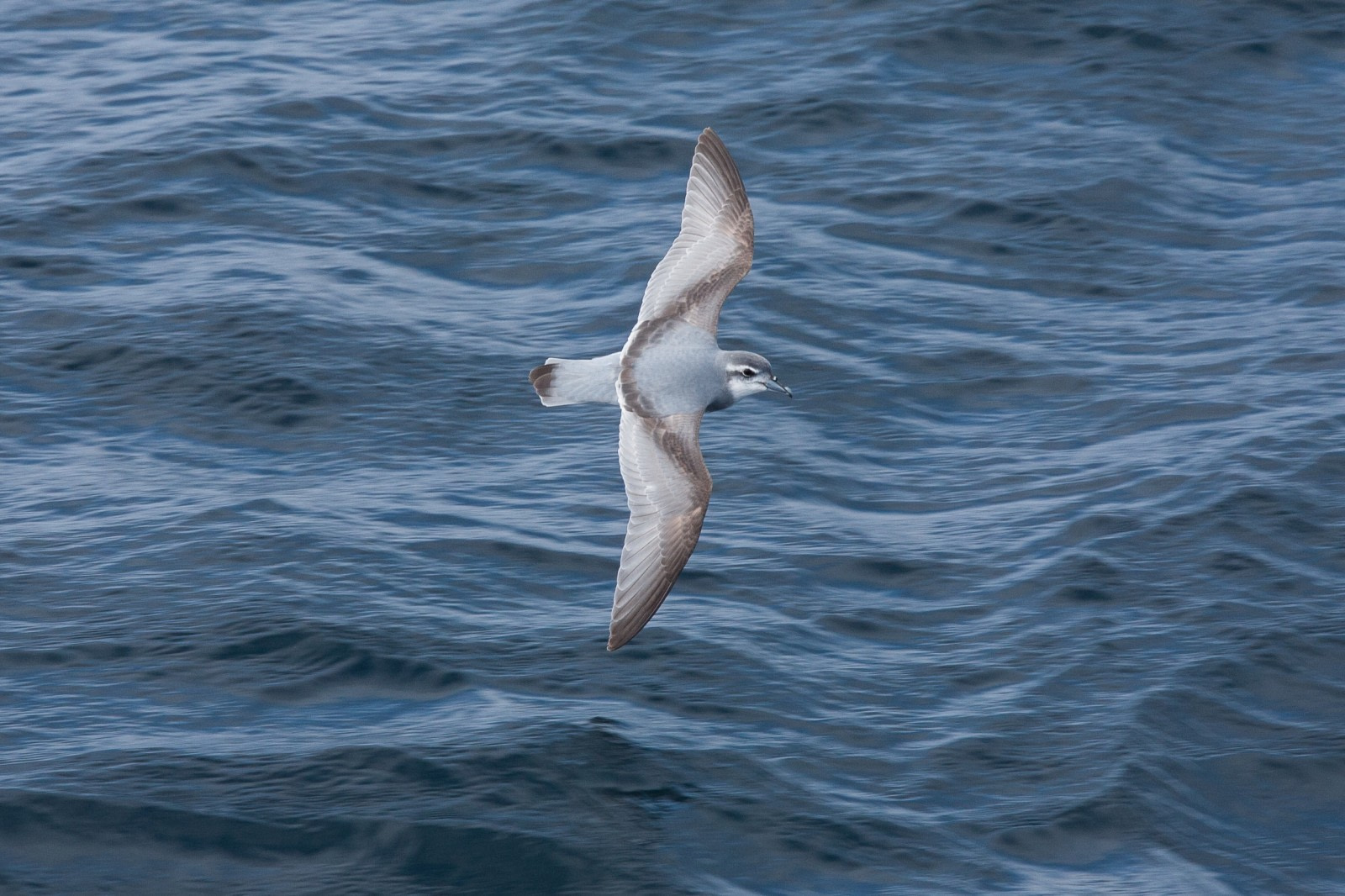Name: Prion, Whalebirds (Pachyptila or Halobaena)
Length: 20 to 30 cm.
Weight: 120 to 250 grams, depending on species.
Location: Antarctica and sub-Antarctic islands.
Conservation status: Least Concern.
Diet: Crustaceans, fish, zooplankton (depending on species).
Appearance: Blue-grey back, black wings and tail, white underparts, black patch under eye, black forehead, black bill. Bill's shape differs between species. Dove-like configuration.
How do Prions feed?
Feeding habits vary by species. All species forage for marine life like crustaceans and small fish. Three species have lamellae on their bills to strain zooplankton, similar to a whale's baleen. Prions skim the water's surface, dipping their bills to catch prey.
Are Prions social?
Prions nest in colonies and feed in large flocks.
How fast do Prions fly?
Flight speed varies by species. For example, the Antarctic Prion flies around 35 km per hour.

What are Prion birthing rituals like?
Breeding habits depend on the species. The season starts around early August. Most prions breed in burrows, with both parents building the nest and incubating a single egg for about 50 days. They then care for the hatchling for another 50 days.
How long do Prions live?
Prions live about 15 to 20 years.
How many Prions are there today?
The Prion populations are:
- Blue Petrel - 3,000,000
- Fairy Prion - 5,000,000
- Slender-billed Prion - 7,000,000
- Fulmar Prion - between 150,000 and 300,000
- Broad-billed Prion - 15,000,000
- Antarctic Prion - 50,000,000
- Salvin's Prion - 12,000,000
Total population: approximately 92,300,000 individuals.
Do Prions have any natural predators?
Prion eggs and young are prey for Skuas, cats, and rats, depending on their location.

7 Profound Prion Facts
- Prions are named from the Greek word "priōn," meaning "saw," referring to the serrated edges of their bill.
- "Prion" refers to one of the four groups within the Procellariidae family. There are two genera of Prions: Pachyptila and Halobaena.
- Halobaena caerulea - Blue Petrel
- Pachyptila turtur - Fairy Prion
- Pachyptila belcheri - Slender-billed Prion
- Pachyptila crassirostris - Fulmar Prion
- Pachyptila vittata - Broad-billed Prion
- Pachyptila desolata - Antarctic Prion
- Pachyptila salvini - Salvin's Prion
- Broad-billed Prions are the only Petrels with a flattened bill with lamellae.
- Pachyptila comes from Greek words "pakhus" (stout) and "ptilon" (feather).
- Prions store nutrient-rich oil in their stomach's proventriculus, used for defense, feeding during long flights, or feeding their young.
- Prions have a gland that excretes saline solution to remove excess salt from ocean feeding.
- A flock of Prions at sea can indicate nearby whales, as whales drive fish to the surface, making it easier for Prions to feed.






